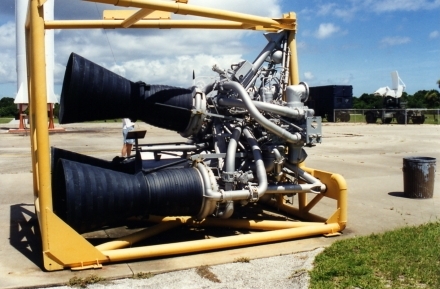
Overview
Retired Exhibit
Type: G-38 booster engine for XSM-64 Navaho
Agency: U.S. Air Force
Contractor: Rocketdyne
Cape Canaveral Air Force Station Operations: 1956-1958
History
The G-38 or XSM-64A, was intended to be the final generation of the Navaho cruise missile. Also called the Super Navaho, design of the G-38 began in 1952.
The G-38 was intended to carry a 5-ton nuclear warhead a distance of over 5,000 miles. The vehicle would fly at three times the speed of sound at a peak altitude of nearly 13 miles. Since it would be nearly impossible to intercept at such tremendous speeds and altitudes, the G-38 would have been an extremely potent weapon.
Advanced Technology
The booster engines of the G-38 represented a giant leap in engine technology. This three-engine cluster could produce more than 400,000 pounds of thrust. Each of the Rocketdyne LR83-NA-1 engines in the cluster burned liquid oxygen and kerosene. This three-pack engine could be gimbaled (moved slightly from side to side) to help steer the missile in flight.
Electronic systems to be used in the G-38 were among the most advanced in its day, as was its inertial guidance system. Specifications for the G-38 called for wings made of titanium, a very rare and expensive material. The overall vehicle would have been 90 feet long with a 40-foot wing span.
In the end, however, no G-38 missiles were ever constructed. The vehicle was deemed too expensive to build and too impractical to transport in a combat setting. In addition, the introduction of the Intercontinental Ballistic Missile (ICBM) sharply reduced the need for long-range cruise missiles.